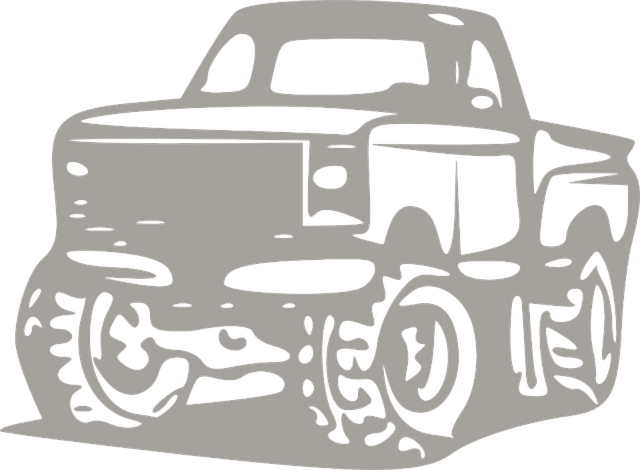Brake pads, integral to trucks' braking systems in Brownsville, significantly impact stopping performance and component longevity. Modern options include semimetallic and organic compositions with unique benefits. Using appropriate pads, as determined by Brownsville's advanced truck diagnosis tools, optimizes stopping distances, minimizes brake fade, and extends braking system lifespan. These tools offer real-time data on pad performance, enabling informed decisions and preventing costly repairs. Organic pads are ideal for daily drivers, while ceramic and metal pads excel in specific scenarios. Early pad wear signs include changes in braking performance, unusual noises, and visual thinning. A step-by-step guide emphasizes regular inspections, replacements according to manufacturer recommendations, and leveraging Brownsville's truck diagnosis tools for safe driving.
Brake pads are a critical component of your truck’s braking system, ensuring safe and controlled stops. This comprehensive guide delves into the essential role brake pads play, using Brownsville truck diagnosis tools to uncover their performance secrets. From understanding different types to identifying wear signs and learning maintenance best practices, this article equips truck owners with knowledge for optimal safety and performance. Explore these insights to keep your truck’s braking system in top shape.
- Understanding Brake Pads: Essential Components of Your Truck's Braking System
- Brownsville Truck Diagnosis Tools: Unlocking the Secrets of Brake Pad Performance
- Types of Brake Pads: A Comprehensive Overview for Truck Owners
- How to Identify Worn Brake Pads: Early Signs and Symptoms
- Maintaining and Replacing Brake Pads: A Step-by-Step Guide for Optimal Safety
Understanding Brake Pads: Essential Components of Your Truck's Braking System

Brake pads are a fundamental part of your truck’s braking system, playing a crucial role in ensuring safe and effective stopping power. These components are designed to create friction with the rotors when you apply the brakes, slowing down or bringing your truck to a complete stop. Understanding brake pads is essential for any vehicle owner, especially those relying on robust trucks for daily tasks in Brownsville.
The right brake pad type and condition directly impact braking performance. Modern pads come in various compositions, each offering distinct advantages. Semimetallic pads, for instance, are popular due to their balance between durability and reduced noise. Organic pads provide smoother braking but may wear faster. Using the right pads, as determined by your Brownsville truck diagnosis tools, ensures optimal stopping distances, reduces brake fade during heavy use, and extends the lifespan of other braking components.
Brownsville Truck Diagnosis Tools: Unlocking the Secrets of Brake Pad Performance

Brownsville, a bustling hub for truck enthusiasts, has seen a surge in the demand for efficient and reliable vehicle maintenance solutions. Among the various tools that have transformed the way locals diagnose and service their trucks, Brownsville Truck diagnosis tools stand out as indispensable assets. These innovative tools are designed to unlock the secrets of brake pad performance, enabling mechanics and owners alike to make informed decisions about their vehicles’ safety and efficiency.
By leveraging advanced technology, these diagnostic tools provide accurate readings and insights into brake pad wear, temperature, and overall health. This real-time data empowers users to identify potential issues early on, preventing costly repairs and ensuring optimal braking performance. With the help of Brownsville Truck diagnosis tools, locals can now navigate the complex landscape of truck maintenance with confidence, knowing their vehicles are in top shape for any road ahead.
Types of Brake Pads: A Comprehensive Overview for Truck Owners

Brake pads are a critical component in any vehicle’s braking system, and for truck owners, understanding the different types available is essential for optimal performance and safety. The market offers a wide array of options, each designed to cater to specific needs and driving conditions. From organic to ceramic and metal, these materials have distinct advantages and considerations. Organic pads, known for their low dusting properties, are popular for daily drivers due to their quiet operation and consistent braking power. Ceramic pads, on the other hand, offer excellent heat resistance and reduced noise, making them ideal for trucks subjected to frequent and intense braking. Metal brake pads, though less common, provide superior stopping power and heat dissipation, suitable for high-performance or off-road vehicles.
When it comes to maintaining your truck’s brakes, Brownsville offers a range of diagnosis tools that can help identify pad wear and other issues. These tools are invaluable resources for owners looking to stay ahead of potential problems. Regular inspections using these devices ensure the longevity of brake pads, preventing unexpected failures and enhancing overall vehicle safety. With the right combination of brake pad material and proper care, truck owners can enjoy confident and controlled stops, even under demanding conditions.
How to Identify Worn Brake Pads: Early Signs and Symptoms

Identifying worn brake pads early is crucial for maintaining your vehicle’s safety and performance, especially in Brownsville, where truck traffic is high. Some telltale signs indicate that your brake pads need replacing. One of the most obvious symptoms is a noticeable change in braking performance. If your brakes feel soft or unresponsive when pressing the pedal, it could be a sign of significant pad wear. This reduced effectiveness can lead to longer stopping distances and is a serious safety concern.
Another early indication is unusual noises coming from your brake system. Screeching, squealing, or high-pitched whining sounds, especially when applying the brakes, suggest worn pads. These noises occur due to the friction between the pad and rotor as they make contact. Moreover, visual inspection of your pads can reveal significant thinning or damage. Pads that appear thinner than their original specification or show signs of cracking or glaze should be replaced immediately. Using diagnosis tools like those available at Brownsville truck service centers can help identify these issues early on, ensuring your vehicle remains safe and reliable.
Maintaining and Replacing Brake Pads: A Step-by-Step Guide for Optimal Safety

Maintaining and replacing brake pads is an essential task for ensuring optimal vehicle safety, especially in areas like Brownsville where traffic conditions can be demanding. Here’s a step-by-step guide to help you through the process using tools commonly found in a truck owner’s toolkit or those available at any auto parts store.
First, locate your brake pads. They are typically positioned inside the wheel hubs and are accessible through the wheels. Use a jack and jack stands to safely lift and support your vehicle before removing the wheels. Once exposed, inspect the pads for signs of wear, cracking, or discoloration. If they appear worn down or show any damage, it’s crucial to replace them immediately. Remove the old pads using specialized tools like brake piston tools, being mindful of any retaining clips or bolts. Install new pads, ensuring they are properly seated and aligned. Double-check the calipers for proper adjustment before lowering your vehicle and tightening the wheel bolts securely. Regularly checking and replacing brake pads according to manufacturer recommendations is vital for maintaining control and safety on Brownsville’s roads.
Brake pads are a critical component of your truck’s braking system, ensuring safe and controlled stops. This article has explored various aspects of brake pads, from understanding their essential role in Brownsville truck braking systems to identifying wear and maintaining optimal performance using specialized Brownsville truck diagnosis tools. By familiarizing yourself with different pad types and learning early signs of wear, you can ensure timely replacements for maximum safety on the road.



